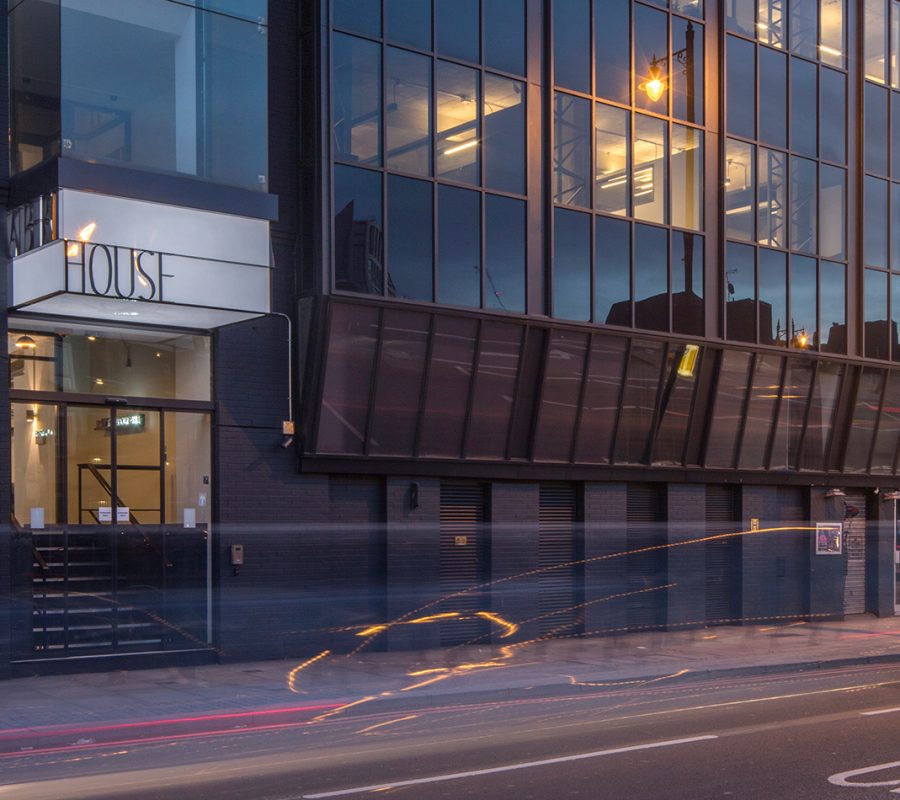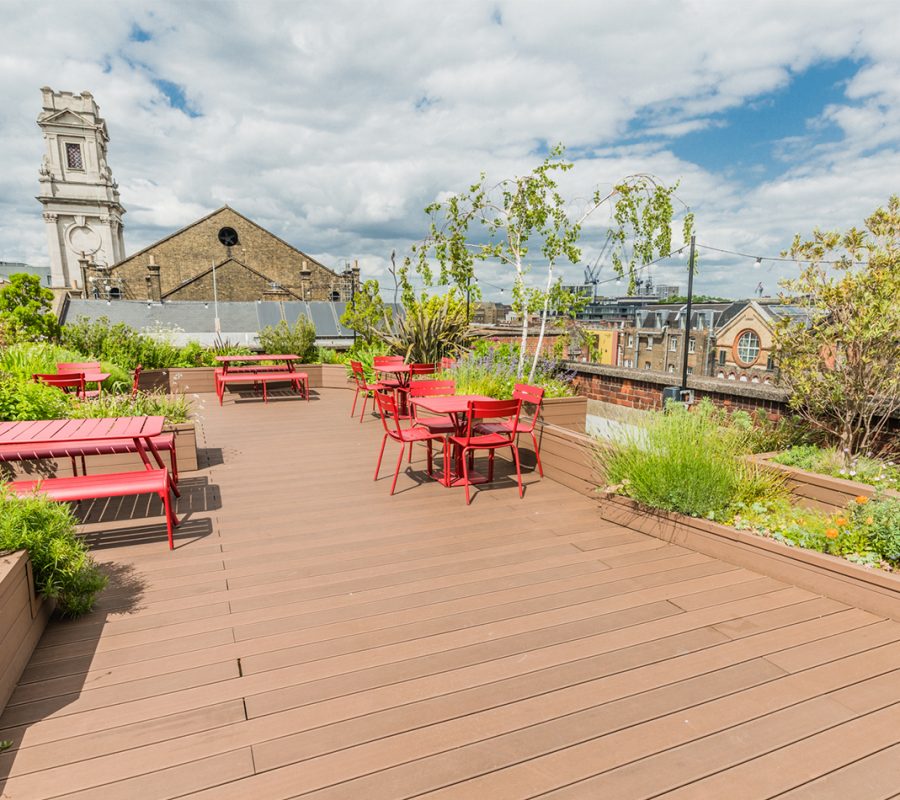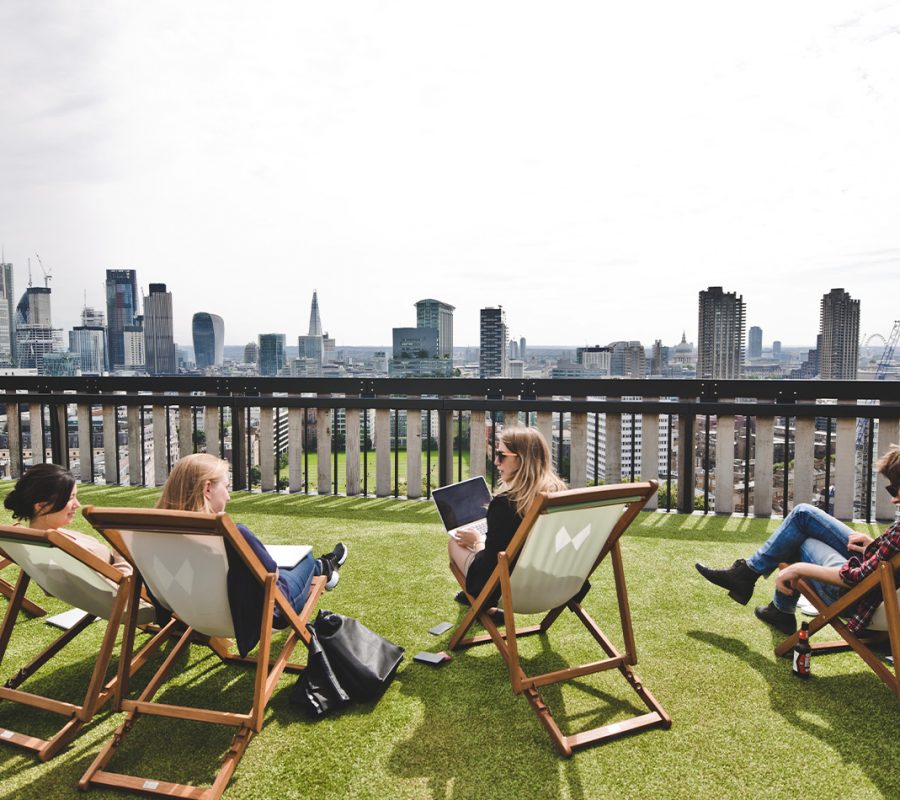Location:Shoreditch
Shoreditch Office Space
Shoreditch office space and the wider district have long been associated with first movers.
Located in what is known as the East End in East London, it was the capital’s entertainment district during the Elizabethan era, also referred to as the Golden Age, as playhouses were not permitted within the City of London boundaries. Therefore, theatres were built in Shoreditch’s City Fringe district.
William Shakespeare based his company in Shoreditch; however, at the expiration of the lease in 1599, he moved the timbers of ‘The Theatre’ to the equally liberal district of Southwark to construct the Globe.
The History of Shoreditch
The area evolved in the 17th and 18th centuries as wealthy traders and French Huguenot silk weavers moved to the district, establishing a textile industry centred around Spitalfields to the south. During the 19th century, Shoreditch evolved further and became the centre of London’s furniture industry,
Shoreditch was heavily bombed during the Second World War; hundreds of civilians were killed, and many buildings were destroyed by the thousands of devices dropped. However, the destruction created opportunities to develop Shoreditch Park and Haggerston Park.
Following the war, Shoreditch declined in conditions, as did both the textile and furniture industries. The district became a part of the London Borough of Hackney in the 1960s.
During the 1990s, Shoreditch became a fashionable district, and its former industrial buildings were converted into flats and offices, which were particularly popular with the creative and cultural industries. Also known as CCI, the sector encompasses design, fashion, film, music, and other areas.
Traffic congestion had become an issue in the area, partly because the main streets of Old Street, Shoreditch High Street, Curtain Road, and Great Eastern Street had been formed into a one-mile-long continuous one-way system. In 2002, it was changed into a two-way system, easing the issue.
The East London Line Extension in 2005 extended the existing tube line from Whitechapel tube station, bypassing Shoreditch tube station, and created a new station named Shoreditch High Street, closer to central Shoreditch. This also made movement around the area far more efficient.
By this time, first movers in the telecoms, media, and technology (TMT) industries were based in Shoreditch and around the Old Street Silicon Roundabout area.
The district’s population of talented and fashionable people, the presence of the creative and cultural sector and the proximity to the financial power of the City were the perfect ingredients to make Shoreditch a haven for technology companies as well as a diverse range of others.
The Business Benefits of Shoreditch
The office space in Shoreditch is representative of the district as a whole and is cutting-edge, featuring elegantly renovated industrial buildings that incorporate ultramodern technologies, world-class amenities, and unique design.
Shoreditch also offers brand new Grade A office buildings such as the extremely energy efficient, future-proof 140,000 square foot (13,000 square metre) Worship Square that will deliver workspace with a BREEAM score of ‘outstanding’, a 5* NABERS rating, a Platinum WELL certification, a platinum WiredScore and SmartScore, and an EPC rating of A. Leading the way in sustainable office space development, it was envisioned from the outset with embodied carbon targets more than 50 per cent lower than the UK Green Building Council (UKGBC) 2020 baseline and 18 per cent lower than the 2030 GLA (Greater London Authority) aspirational benchmark.
Hackney Borough Council also granted permission to develop One Fairchild Street in 2024. The site, at 201-207 Shoreditch High Street, would deliver around 344,000 square feet (32,000 square metres) of premium office space and approximately 13,350 square feet (1,240 square metres) of public realm space.
Another groundbreaking office building in Shoreditch is the Black and White Building on Rivington Street. Described as a ‘boundary-pushing sustainable workspace,’ it was the first timber office to be built in London in 400 years when it was built in 2023. The six-storey building is the tallest engineered timber office building in central London. It is powered by 100 per cent renewable energy sources and has over a third less embodied carbon than comparable six-storey structures.
It, like many others in Shoreditch, offers flexible alternatives to leased office space in the form of premium managed office spaces and high-end serviced offices.
Both forms were always favoured by the hundreds of startups in Shoreditch that found agility and efficiencies in the turnkey workspaces.
The spaces also allowed for rapid scaling, and the all-inclusive pricing created accounting efficiencies.
However, larger businesses in Shoreditch increasingly seek the financial control they offer through their all-inclusive rents and the limited capital expenditure required, as they are ready-fitted and fully furnished and don’t trigger a dilapidations process at exit.
Custom managed office spaces in Shoreditch are ready-fitted, and the client directs the technical teams of the managed office landlords and providers through the furnishing and fit-out process. Custom offices can include private reception areas, meeting rooms, private offices, open-plan working areas, hot-desking zones, kitchens, bathrooms, and shower facilities. Clients can also choose a customised service level pack.
The private serviced offices are move-in ready. They are fully furnished, fitted, and equipped with state-of-the-art business technologies. Clients enjoy thoughtfully designed premium communal amenities, including bookable meeting and boardrooms, breakout spaces, quiet zones, fully stocked kitchens, fitness and wellness facilities, cafes, and outdoor areas.
The serviced and managed offices are let via flexible licences with relatively low commitment in terms of agreement length; however, options to extend are provided.
The option to expand into a larger space within the same building provides agility during times of scaling, and there are many offices in Shoreditch with space for 1,000 desks or more.
These may be in the form of a suite, cluster of suites, a self-contained floor, several floors or a building with its own front door.
Equally, the office licences allow the client to be nimble and contract into a smaller space if required.
Getting to Shoreditch
The high-end offices in Shoreditch are wellness-focused and sustainably managed, offering end-of-journey facilities such as bike spaces, showers, changing rooms, and EV chargers.
However, Shoreditch also offers excellent public transport links from Old Street and Shoreditch High Street stations.




